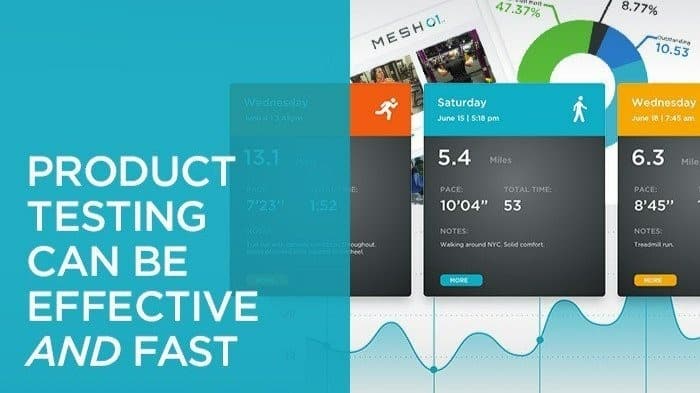Weather’s impact on businesses is broad. From employees, infrastructure, products, and customers, weather can influence people’s decisions and the products they receive. Although the weather might seem unpredictable, businesses can harness the power of weather data to mitigate the adverse effects of weather, prepare for possible adverse conditions, and take advantage of calm weather conditions.
Researchers at the University of Michigan published a study in 2018 called “Weather and Business: Evidence from Large-Scale Linguistic Analyses.” By reviewing 100,000 annual reports of public companies, researchers found a close link and company performance. For example, companies with a higher weather exposure were more likely to be less profitable and proved to be riskier investments. (1)
Why are Weather and Climate Important to Business?

Every step in a company’s supply chain is vulnerable to changes in the weather and climate. As an example, as the weather shifts, the demand for snow blowers, scarves, pool toys, or resort wear changes. Weather and climate fluctuate, and a business that can pivot seamlessly around these changes or even use the weather to their advantage gets ahead of others. (1)
Business During Normal Weather Conditions
Despite day-to-day changes in the weather, normal weather conditions remain steady over time. Knowing what weather conditions to expect puts businesses at an advantage because they can utilize the predicted weather to benefit their bottom line. Incorporating weather data into overall decision-making allows businesses to determine the best times to ship goods, advertise to customers, or extend shop hours. The possibilities are endless when it comes to using the information from weather data.
Severe or Abnormal Weather Conditions
It’s not only the expected chilly evenings or the sunny summer season that affects business. About 70% of businesses are affected adversely by abnormal weather, limiting their logistics and performance. When abnormal weather strikes, especially over prolonged periods, it can cause business to plummet and create a financial burden. Abnormal weather is often unexpected, which leaves companies without a plan and unable to respond appropriately. (2)
What is Abnormal Weather?
Although there’s no scientific definition for what constitutes abnormal weather, most people define it as weather outside of the 30-year average value. Unfortunately, the changing climate makes abnormal weather more of the norm. The shift to warmer temperatures and extreme weather events places business at risk and creates a greater need for precise weather data. The ability to determine dangers and circumvent weather-related catastrophes protects businesses. (2)
How Does Weather Affect Customers?
There’s no denying that weather wields a substantial effect on people. It can dictate a person’s emotions, sense of safety, where they go, and what they buy. Business owners understand that customer behavior fluctuates throughout the year. For example, the tourism industry is heavily dependent on the weather. A customer’s buying habits can change with the seasons and the weather, shaping manufacturing, purchasing, and inventory. 3, 4,
According to the study of Behavioral Finance – field of Behavioral Economics — psychological influences from the environment can affect the overall response of investors, customers, and businesses. What’s more, research indicates that weather impacts mood —potentially impacting customer purchases and even the rise and fall of stocks.
Significant funds are spent researching customer buying trends, and this research should also include weather data. How the weather impacts customer purchases can optimize production and sales. By using weather data to meet consumer demands and determine pricing, businesses can meet their production and sales goals more effectively. (3, 4, 5, 6)
How Does Weather Affect Product Pricing?

Business owners understand that pricing your product is one of the most challenging aspects of the business. Product pricing is both an art and a science, and businesses must resist including emotion into the mix. Pricing a product appropriately at the right time can make your business grow. On the other hand, overpricing or pricing a product too low can destroy profits.
Using a formula and data-driven approach takes the guesswork out of pricing. Critical factors for pricing a product should include:
● Targeting the customer
● Comparing pricing of competitors
● Determining quality versus cost
● Weather and seasonal demands
When comparing competitor prices and targeting the customer, the outcomes are relatively straightforward. With weather, however, businesses need more information to make appropriate decisions. Because weather changes drastically, having weather data and averages to offer a clearer picture is essential to making data-driven decisions. (6)
How Does Weather Affect Product Pricing?

Supervisors would like to believe that their employees are immune to the changes in the weather, but employees are human, too. Like customers, employees become affected by rainy days, heatwaves, and snowstorms. Additionally, if the weather brings in more customers, more employees are necessary to meet the demand. If businesses aren’t prepared for employee scheduling fluctuations, they may experience significant shortfalls in staffing and production.
How Does Weather Cause Destruction of Property?
It might be a no-brainer to some, but many companies don’t understand the impact of weather damage on their bottom line. A 2019 report from Morgan Stanley estimates that extreme weather cost the world $650 billion from 2015 to 2018, with $415 billion of that money in North America alone. Sadly, climate change will continue to cost the world’s corporations in losses. (7)
Destruction is immediately noticeable after a significant extreme weather event, like a tornado or hurricane. Flooding, wind damage, and ice can all cause severe damage to infrastructure and supply chains. But even small wildfires during dry seasons and continuous moisture during wet seasons can also cause damage, resulting in costs to a business.
Gauging the impact of weather on a business is difficult without data, because people may need assurance that setting aside funds for a potential event is necessary. In addition, a company must weigh the cost of repeatedly repairing damages versus the cost of taking action to prevent them. Weather data becomes valuable when deliberating on options related to weather damage.
Examples of How Weather Affects Famous Corporations
Small businesses aren’t the only ones impacted by weather. Large corporations have suffered through weather-related setbacks and have moved to use weather data driven reports in their decision-making.
FedEx
In the second half of 2011, unusually severe weather caused significant disruptions to the FedEx shipping networks. The damages and disruptions resulted in lost revenues and higher operational costs. FedEx now utilizes weather data to avoid severe weather delays and keep costs down. (8)
Kinder Morgan
In 2008, weather delays adversely impacted Kinder Morgan, necessitating an increase in capital expenditures. Today, Kinder Morgan incorporates weather data to strengthen its pipeline operations. (9)
Making the Most of Weather Data for Businesses

A report from IBM Institute for Business Value found that business executives stated that weather affected at least one revenue or one cost metric in their company. These executives also found weather adversely impacted their companies in the following ways:
● Adversely affected risk management
● Raised insurance premiums
● Adversely affected operations
● Increased the cost of goods
The IBM report, however, does state that there’s hope to be had regarding the weather. Rather than pointing fingers at the weather, businesses can pivot to capitalizing on it through weather data. Weather data offers insight into ways businesses can improve risk mitigation costs, insurance, legal fees and allows companies to focus on their customers and products rather than the weather. (10)
Resources:
(1) Tuck School of Business https://papers.ssrn.com/sol3/papers.cfm?abstract_id=3438428
(2) Harvard Business Review https://hbr.org/2017/09/severe-weather-threatens-businesses-its-time-to-measure-and-disclose-the-risks
(3) Investopedia: Does Weather Affect the Stock Market? https://www.investopedia.com/articles/markets/111015/does-weather-affect-stock-market.asp
(4) Investopedia: Behavioral Finance Definition https://www.investopedia.com/terms/b/behavioralfinance.asp
(5) Frontiers in Psychology https://www.frontiersin.org/articles/10.3389/fpsyg.2017.00140/full










